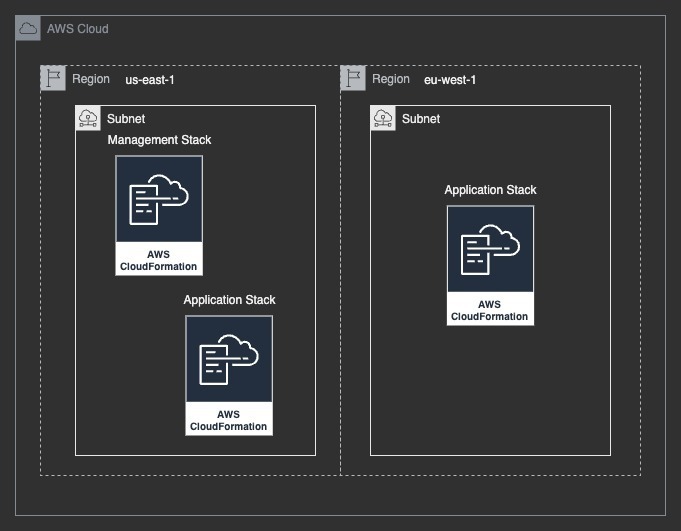Multi Region Stack Example
This is an example of one way to deploy multiple Cloudformation stacks to different regions, without having forks within the code.
After deployment has completed, you should find function urls listed in your CLI corresponding to the regions you deployed to. Opening them should respond with Hello from ${region}
The cdk.json file tells the CDK Toolkit how to execute your app.
Credentials
By default this assumes you have an AWS profile configured, and will use the default account and region associated with it. The default is the account the credentials belong to and (typically) us-east-1.
If you would like to target a specific account and environment, you can modify bin/multi-region-example.ts to use either of the commented env lines. One is for hard coding the other is for environment variables. You can learn more about CDK environments here.
Useful commands
-
npm run buildcompile typescript to…




